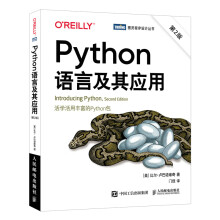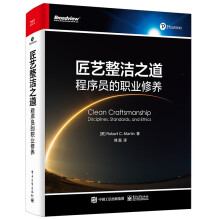At the request of Messrs of its—(the name of importer or its agent), we hereby issue our confirmed, irrevocable documentary Letter of Credit No.-- in your favour for account of Messrs-- (the name of importer) for the amount of $.5000 (Say Pound sterling five thousand only) available for 100% of invoice value against your draft(s) at sight drawn on us accompanied by the following shipping documents marked with numbers.
When the addressee is the advising bank, the opening sentence is usually written in this way:
Please notify Messrs--(the name of exporter and its address) that by order of Messrs--(the name of importer or its agent), we open our confirmed, irrevocable documentary Letter of Credit No.--for an amount not exceeding total of US
Dollar 50746 (Say--) available against surrender of the following documents bearing our Credit number and the full name & address of the openers.
The expressions in the above sentences have many similar ways of writing:
(a) at the request of:
by order of
under the instruction of
(b) to issue an L/C:
to open an L/C
to establish an L/C
(c) our letter of credit:
this letter of credit
above letter of credit
(d) for the amount of:
to the amount of
in amount of
amounting to
应……公司(进口公司名称或其代理人)申请,兹开立第……
号保兑的、不可撤消的跟单信用证。本证以贵公司为受益人,买方
为……公司(进口公司名称),最高金额为$.5000(伍仟英镑整)。
本证凭贵公司开具以我行为付款人按发票金额100%计算的即期
汇票付款,并随附下列写上数字的装船单据。
当收信人是通知行时,开头语通常这样书写:
请将以下各节通知……公司(出口公司名称及地址);应……
公司(进口公司名称或其代理人)申请,本行兹开立保兑的、不可
撤消的跟单信用证第……号,最高金额为US Dollars 50746(伍
万零柒佰肆拾陆美元整),议付须提交下列注明本证号码和开证申
请人的公司全名和地址之装船单据。
开头语中的措词有许多类似写法。
(a)应……申请:
按……指示
在……要求下
(b)开立信用证:
开出信用证
(c)我们的信用证:
本信用证
上述信用证
(d)金额为:
金额达到
金额是
最高金额达
(1) Why is payment by L/C commonly used in foreign trade?
The reason is very simple. Buyer and seller are in different countries and they, generally speaking, do not know each other, consequently the method of payment is a real problem to the both. For instance, a buyer in England wishes to buy from a seller in New York a quantity of Wheat, There are many methods in which the transaction may be financed.
The buyer may send cash or bankers draft with his order to the seller. But there are obvious objections to such a scheme. First, the buyers capital will be tied up from the time of remitting it until the goods arrive and are sold, especially in cases where the goods ordered can only be shipped by the seller months or years afterplacing the order. Secondly, the seller may be unknown to the buyer, and his commercial integrity may be questionable. With the buyers cash or draft safely in the sellers hand, he might refuse to fulfill the contract, leaving the buyer with merely a right of action against the seller. Again, even if the seller does carry out his side of the bargain, the goods
might be found to be of inferior quality upon arrival at destination; True, the buyer will probably have a right to reject the goods, but rejection will not recoup him for what he has paid out. He will still be forced to take action--an action which might have to be pursued in a foreign country. The disadvantages of such a transaction are obvious.
Another method of financing a transaction is for the seller to ship the goods and rely on the buyers promise to remit the purchase price when the goods arrive in London. But in this case the difficulties which confront the buyer are reversed. The buyers commercial honesty, the prospects of a falling world
market, which would give him an incentive to reject the goods on any pretext, and the buyers continued solvency are all matters that will be a risk to the seller. Even supposing the transaction is completed as agreed, the seller would have to wait for his money from the time he shipped the goods until he receive the
remittance from the buyer, which again might be a matter of months.
The third method is for the seller to draw on the buyer for the purchase price on D/P basis. But there is always the risk that by the time the goods arrive in London, the buyers financial position may have deteriorated or the market is unfavourable to the buyer and he may be unable or not prepared to meet the draft. The seller might thus be left with a cargo of wheat at his disposal, at a distant port, possibly on a falling market, and the necessity of action against the buyer. If a transaction is concluded under "D/A Payment", the risk which confronts the exporter is doubtless greater because D/A calls for the delivery of shipping documents against acceptance of exporters draft. When the draft has been accepted by the importer, and the documents are released to him, the sole security of the exporter is the good faith of the acceptor.
Another kind is called "green clause L/C". Green clause and red clause are basically the same. The green clause is more strict with the exporter. With the anticipatory money, he has to buy goods and store them in a warehouse in the name of the opening bank. Then he effects shipment. Originally this clause was written in green colour. Hence. the L/C is named after this way of writing.
(b) Packing credit
By the way, we should have a discussion on packing credit. It has nothing to do with an anticipatory L/C. It is the local bank in sellers place that gives credit to the seller. The export country takes this step to promote export business. The seller borrows certain amount of money from his local bank on the
basis of an L/C received from abroad. With this money, he buys and packs the goods stipulated in the L/C, then he makes shipment. At the time of negotiation, the local bank deducts the loan and the interest. The lending bank himself runs the risk of the loan. It has nothing to do with the buyer and the opening bank.
(9) Revolving L/C
(a) The definition of revolving L/C
If the two parties of a transaction close a cohtract on long term and allow partial shipments, the buyer often establishes a revolving L/C so as to simplify formalities and reduce expenses. After the total or partial amount of the L/C has been used up, it can be restored to the original amount. The L/C can be used again and again until the stipulated times of use and the stipulated total amount have been reached.
(b) The four kinds of revolving L/C
A. Automatic revolving L/C
When the amount has been used up in certain period of time, it can be restored automatically to the original amount without the instruction of the opening bank.
……
展开










